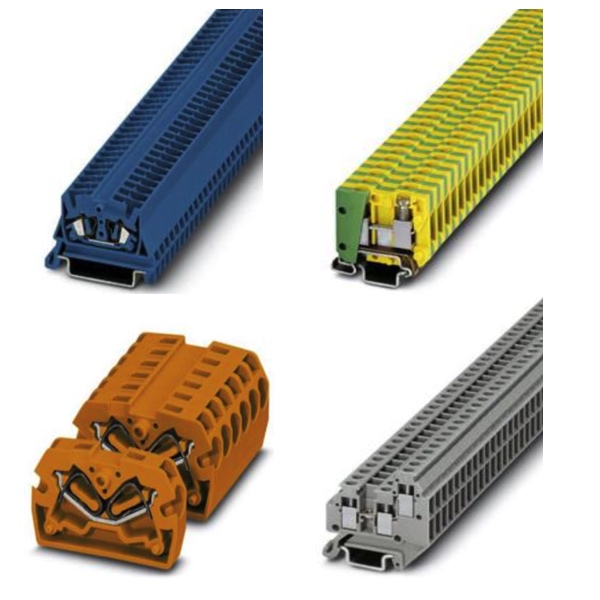Miniature Terminal Blocks

Miniature terminal blocks are engineered to offer a compact and effective linkage for numerous wires in tight quarters. This makes them very useful in control panels, electronics, and small electrical installations. Miniature terminal blocks provide a common and reliable connection point for circuits while maintaining a secure and dependable connection to the wires. They go where standard terminal blocks cannot, and thus are a convenient solution for dense wiring layouts or practically any application with space constraints.
Mini terminal blocks work with solid and stranded wire and many models allow as many as four to connect within a single block. To ensure the best possible performance, installers typically twist stranded wires before insertion to ensure enough strands make proper contact. Even with this prep step, connecting wires to mini terminal blocks tends to be simpler, thanks to options like push wire technology. Users just strip insulation, insert the conductor, and achieve a firm hold that doesn’t require any additional tools.
More Information about Miniature Terminal Blocks
In designs that need a little extra flexibility, the terminal blocks incorporate four holes instead of the traditional two. This allows an installer to easily connect and disconnect up to four wires to one common connection point. A miniature terminal block typically accepts wire sizes ranging from 22 AWG to 14 AWG. And if you see a black terminal block, that’s a clue that the terminal is for some sort of high-voltage application—it’s used to distinguish circuits or phases. Miniature terminal blocks are still an organized way to route reliable, safe, and properly performing electrical signals in industrial and commercial systems.
FAQs
Can a mini terminal block make a wire connection with up to four wires?
Yes, a mini terminal block can make a wire connection with up to four twist stranded wires, provided it is designed with multiple connection points or slots to accommodate that number of wires.
Can larger wires that carry continuous current be used in a miniature terminal block's compact design?
No, larger wires that carry continuous current should not be used in a miniature terminal block’s compact design, as these blocks are intended for smaller wire sizes and limited loads.
Terminal Block Basics
Single Level Pass Through Terminal Blocks are used to connect two wires together with a common junction point. This is helpful when a component needs to be disconnected or isolated within a circuit. These are the most common types of terminal blocks in industrial applications.
Ground Terminal Blocks function almost exactly like most pass through terminal blocks with one exception: they are grounded. These terminal blocks have a metal connection from where the wire is terminated, all the way to the bottom of the block where it will clamp into the panel. This allows for an electrical circuit to be grounded without running a wire to the main ground connection on a breaker or surge protector.
Fused Terminal Blocks function almost exactly like most pass through terminal blocks with one exception: the presence of a fuse. This fuse provides protection for components from too much voltage or current.
Multilevel Terminal Blocks are used to connect two wires together with a common junction point, just like single pass though terminal blocks, but with the advantage of making two electrical connections in the same block. These blocks also incorporate fuses and can be grounded.
Disconnect Terminal Blocks are similar to fused blocks, however the disconnect stops the flow of electricity by lifting a lever on the terminal block. Unlike fuse blocks, they are a more permanent solution, but will not provide any protection in the event of a power surge.

